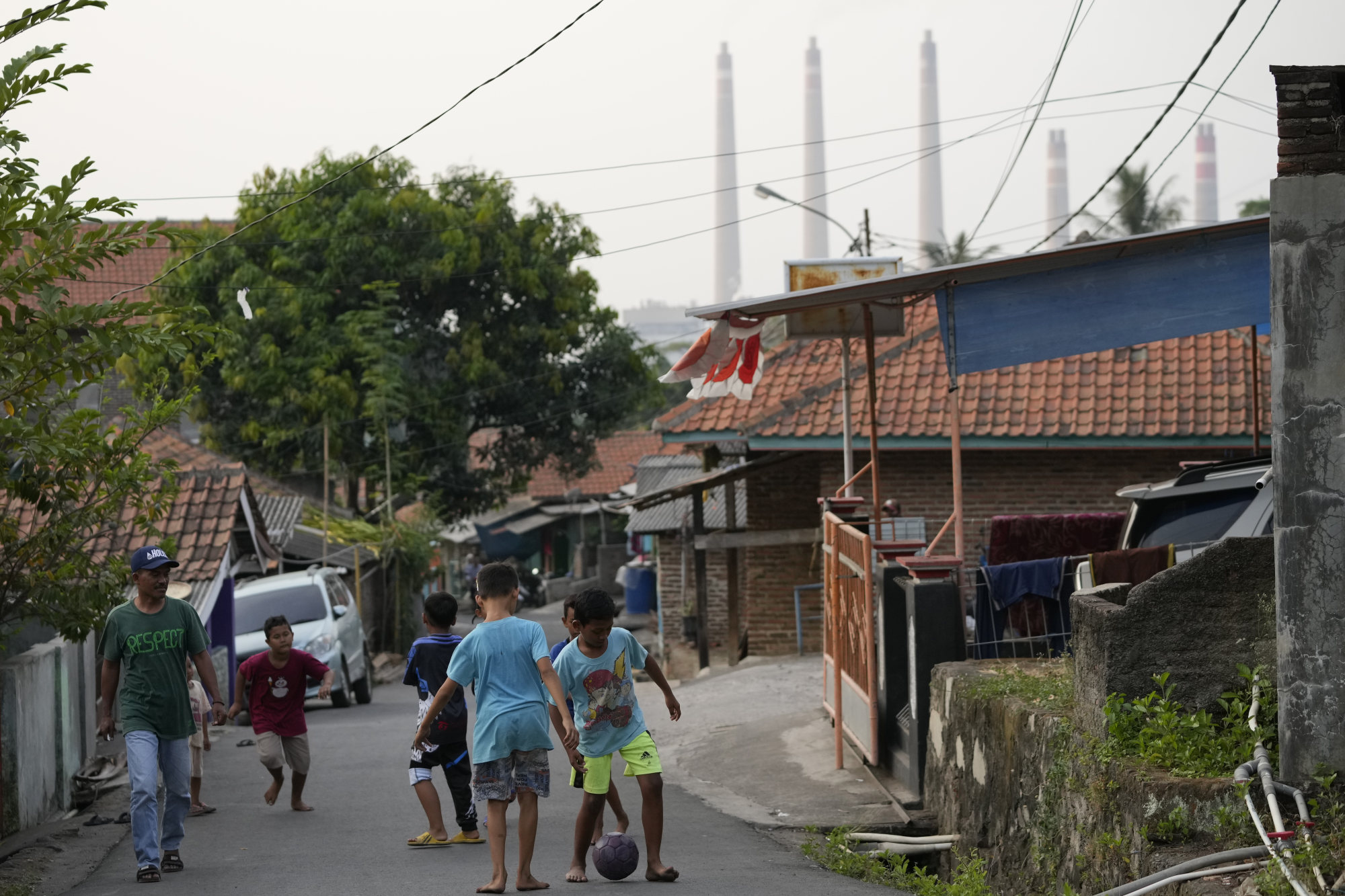Indonesia vowed to cut back on coal. But giving up its ‘natural wealth’ isn’t
But it is adding two more units to the Suralaya power plant, in Banten province next to the capital Jakarta, and has plans for new plants to power its nickel industry – key to the electric-vehicle boom.

Sania, a 37-year-old housewife, who like many Indonesians goes by one name, is dreading the Suralaya expansion.
“I am very worried. It’s been very scary. I want to move out if I can because our house is too near to the plant,” she said.
“If the units start to operate, the dust here will be much worse. I mop the floor two to three times a day. The noise makes my head ache. The smell is terrible.”
The government’s promise also excludes so-called captive coal – plants that power industry rather than feed into the grid.
As Asia chokes on deadly smog, Indonesia cuts back on coal amid pollution spikes
As Asia chokes on deadly smog, Indonesia cuts back on coal amid pollution spikes
Indonesia is one of the world’s top coal producers, and is heavily reliant on the fuel for power generation.
But it is also the recipient of a Just Energy Transition Partnership (JETP), which promises to mobilise US$20 billion to wean the country off coal.
Under the deal, Indonesia moved up its energy transition goals, pledging net-zero power sector emissions by 2050, and to boost the share of electricity generated from renewable sources to 44 per cent by 2030.
Solar and wind power each currently account for less than one per cent of Indonesia’s power mix.
Its JETP calculations do not, however, account for captive power plants, with more than 13 gigawatts already installed and another 18GW planned as of 2022, according to Jakarta-based energy think tank the Institute for Essential Services Reform (IESR).
Coal is Indonesia’s natural wealth … [it] remains the most relied-upon energy source to drive smelter development
Indonesia views these plants as vital to its growing role in the electric-vehicle revolution, powering facilities that process nickel for batteries.
It has even mooted designating as “green” coal-powered plants that power EV industry activities.
“There’s a major issue around captive coal power stations in Indonesia, that runs the risk of derailing or slowing that JETP process,” said Leo Roberts, an analyst at climate think tank E3G.
It could mean the deal was not “an effective whole economy transition for Indonesia”, he said.
The Indonesian government, JETP secretariat and state-owned power company PLN did not respond to requests for comment.
World Bank slammed for backing Indonesian coal plants
World Bank slammed for backing Indonesian coal plants
But Hendra Sinadia, executive director of the Indonesian Coal Mining Association, said efforts to push the country away from the fossil fuel were misguided and some coal-powered energy generation remained necessary.
“Coal is Indonesia’s natural wealth. Indonesia has a significant potential for coal,” he said. “Coal remains the most relied-upon energy source to drive smelter development, allowing us to become one of the main players in the electric vehicle ecosystem.”
Closing existing power plants is complicated by the relative youth of many of Indonesia’s facilities.
That makes them expensive to retire because of the years of potential returns on investment left.
“I believe choosing to phase out isn’t a wise decision,” Sinadia said.
“Coal remains the cheapest, most reliable, and most accessible energy source.”

But activists say that analysis ignores the planet-warming implications of unrestricted coal use, as well as its serious health consequences.
Data modelling by the Centre for Research on Energy and Clean Air suggests emissions from the country’s coal-fired power plants in 2022 were responsible for 10,500 deaths.
“This ‘cheap’ label doesn’t take into account the external costs due to environmental damage and health impacts caused,” said Bondan Andriyanu, a researcher at Greenpeace.
Fisherman Hawasi, 55, also blames the Suralaya plant for pollution offshore that has depleted his livelihood.
“There are no more catches in the waters near the shore. We have to sail far,” he said.
“We have been beleaguered by pollution from all directions.”
IESR says Indonesia…
Read More: Indonesia vowed to cut back on coal. But giving up its ‘natural wealth’ isn’t


